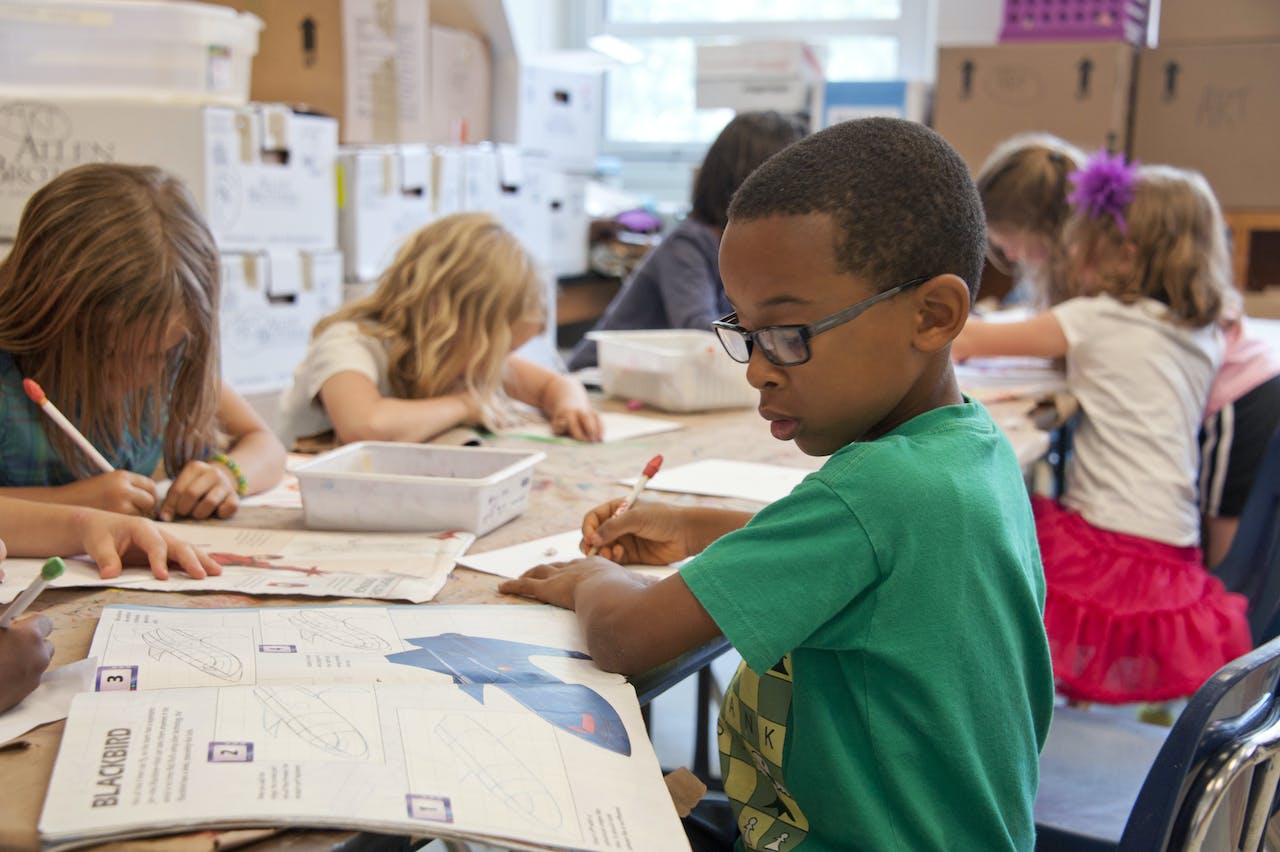Science
Ten Minutes is Enough: How AI is Changing People’s Minds
07 January 2026

Learning means constantly stepping beyond your limits. Overcoming obstacles caused by a lack of appropriate knowledge, experience, involvement, and determination on the way to your intended goal. The key to dealing with those limitations might be found in the Theory of Constraints. It’s a model of action that prioritizes critical thinking, making it easier to identify each potential problem and transform it into yet another success.
Today’s education system is in dire need of new methodologies. One such methodology can be found in the Theory of Constraints. The idea is that instead of reducing pupils’ engagement to mere memorization of recommended content, they should be taught to recognize, name, modify, and find new ways of applying what was previously hidden in theory, impenetrable axioms, and textbooks.
The assumption that education refers to a body of content that needs to be memorized is decidedly outdated. Focusing solely on imparting basic skills also doesn’t seem to cut it anymore. While knowledge and skills are undeniably indispensable components of the learning process, it appears that the most important thing is to be able to discover unfamiliar, fresh concepts, and then use them for creation of a brand-new reality.
Discussions on the key objectives of learning began in 1956, when Benjamin Bloom, along with his collaborators Max Englehart, Edward Furst, Walter Hill, and David Krathwoh, published the framework for classification of educational goals, commonly known today as Bloom’s taxonomy. The proposed scheme was initially comprised of six major categories:
Everything besides the first category was labeled as “skills and abilities”, and knowledge was deemed as something necessary to employ them in practice. Years later, a group of cognitive psychologists, curriculum theorists, instructional researchers, and testing and assessment specialists published a thesis called “A Taxonomy for Teaching, Learning, and Assessment.” This was a revision of the taxonomy introduced by Bloom. They tried to modify the previous static approach to learning goals, and advocated for a more dynamic conception. To this end, they proposed using verbs and gerunds in their taxonomy instead of nouns found in Bloom’s version. They also partially amended the categories by adding the “Create” section. As a consequence, the revised taxonomy was as follows:
Learning is an active process. It allows us to distinguish, name, and memorize components of reality and the events in our surroundings. We familiarize ourselves with tried-and-true behaviors and use them to construct algorithms. Moreover, we choose the appropriate course of action—modifying it when necessary—to match specific goals. The world is neither completely organized nor entirely transparent. This lack of clarity forms the foundation for learning. We juxtapose the challenges we face with available resources and the means of their utilization. When we notice that an established way of tackling a difficult task is insufficient, we devise a new one. For many, the essence of this process can be encapsulated in the phrase “the sky is the limit.” Overcoming obstacles is one thing, overcoming them in a skillful way is another. That’s where critical thinking comes into play.
Both the workplace and educational environments have dramatically evolved over the past few decades. This shift might be a contributing factor to certain impediments in natural communication, not just between grandparents and their grandchildren but also between children and their parents. Living in a global village allows us to take a peak in the mind of practically everybody we attempt to connect with. We are aided, or rather ensnared, by electronic tools and digital applications that have become integral to many people’s lives. We are overwhelmed by the ever-growing stream of information coming our way through text messages, e-mails, social networks, or the internet in general. Neither adults nor children are sufficiently equipped to fully digest this myriad of information. It becomes imperative to distinguish intentions and beliefs from actual information, and opinions from verifiable facts. Critical thinking seems paramount in this situation. Make no mistake though, it’s not about being contrarian and disputing everything one hears or reads, but rather about mastering a set of skills and adopting attitudes that include:
A cursory glance at the set above confirms that these skills should be a crucial part of school education. Critical thinking allows one to read, interpret and evaluate texts, images, and interactions with people we build relationships with. According to the definition of the National Council for Excellence in Critical Thinking, “Critical thinking is the intellectually disciplined process of actively and skillfully conceptualizing, applying, analyzing, synthesizing, and/or evaluating information gathered from, or generated by, observation, experience, reflection, reasoning, or communication, as a guide to belief and action. In its exemplary form, it is based on universal intellectual values that transcend subject matter divisions: clarity, accuracy, precision, consistency, relevance, sound evidence, good reasons, depth, breadth, and fairness.”
You may also like:
Socrates is often hailed as the forefather of critical thinking. There were also other luminaries that contributed to the idea. This includes such bright minds, explorers of psyche, and educationalists from the 20th century like John Dewey, Ludwig Wittgenstein, Jean Piaget, and Lev Vygotsky. Edward Maynard Glaser, a past president of the American Psychological Association’s Division of Consulting Psychology, wrote that critical thinking “calls for a persistent effort to examine any belief or supposed form of knowledge in the light of the evidence that supports it and the further conclusions to which it tends. It also generally requires the ability to recognize problems, to find workable means for meeting those problems, to gather and marshal pertinent information.” The Theory of Constraints is one of the pivotal conceptions for the implementation of these ideas in education.
Theory of Constraints (TOC) was developed by Israeli physicist Eliyahu Goldratt, who became famous for using science to address economic issues. His theory simplifies the process of identifying and managing everyday constraints, including those we face in learning. These titular constraints are essentially factors that hinder the progress towards achieving a specific goal. Once those constraints are recognized, appropriate tools can be utilized, not so much to eliminate as to limit, manage and transform them into solutions conducive to achieving the desired result. After many years of implementation in business contexts, it turned out that TOC instruments, due to their premise and structure, are exceptionally suited for fostering critical thinking in education. TOC features action schemes—simplified and fine-tuned to pupils’ needs (including pre-schoolers)—designed to systematically identify the primary sources of constraints that obstruct problem-solving or the completion of assigned tasks.
The basic vehicle applied by the teachers that follow TOC is the “logic branch.” It consists of identifying cause-and-effect relationships. This helps with determining logical repercussions of analyzed events, established facts, and derived conclusions. As a result, it becomes possible to anticipate the eventual outcomes and ramifications of a studied event or discussed process. The logic branch is employed primarily to develop pupils’ competences of formulating casual connections or predicting events. It also proves helpful in addressing and correcting negative and impulsive behaviors of schoolchildren.
Other TOC instruments adapted for educational settings include the Evaporating Cloud and the Ambitious Target Tree. The Evaporating Cloud can help with investigating conflicts and pinpointing their root causes to formulate appropriate resolutions. It’s a practical tool that enhances students’ comprehension of exercises and instructions, objectivizes the evaluation of proposed methodologies, and supports logical and thoughtful problem-solving. The Tree trains pupils to discern the significance of individual problems, recognized as the constraints in their learning or self-development journeys. The intended goal becomes attainable by drafting a strategic plan broken down into stages, each based on reinterpreting the identified constraints.
The use of TOC in education is gaining traction. The Theory of Constraints for Education foundation, which operates globally, reported that by leveraging TOC methodologies, 7th-grade pupils from a school in Detroit improved their scores on the Michigan Educational Assessment Program state tests by 40%. In Arlington, the same instruments allowed to reduce the number of failed exams by 20% in just half a year. TOC methods are adopted internationally, proving effective regardless of students’ age, cultural differences, or political systems. In Malaysia, more than 30,000 teachers were trained in TOC methods between 2000 and 2001 as part of the transition program for all first-year students. José Martínez, the former Minister of Education in Mexico, championed the wide-scale adoption of TOC. Consequently, a special program was created for teachers and teacher-trainees in the state of Nuevo León. Interestingly though, the proposed solutions are always quite simple. But what really counts is that they are willingly accepted and used by the pupils.
You may also like:


Science
06 January 2026


Zmień tryb na ciemny